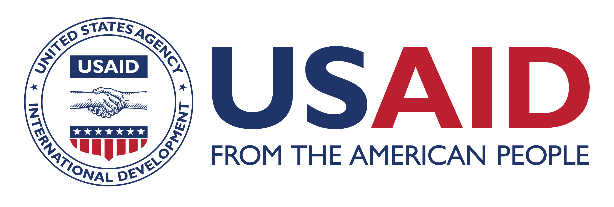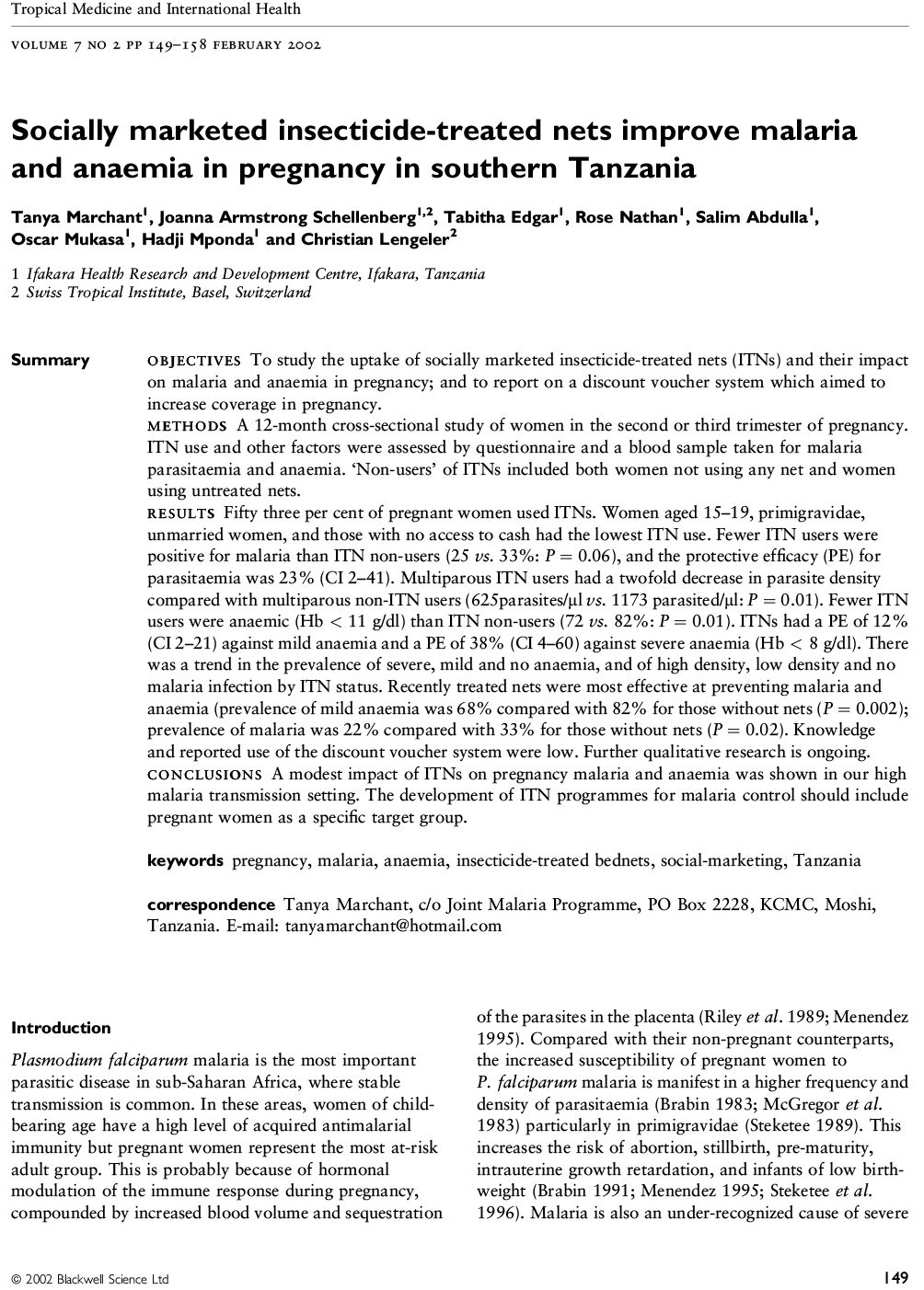
Resource Library
Socially marketed insecticide-treated nets to improve malaria and anaemia in pregnancy in southern Tanzania
OBJECTIVES To study the uptake of socially marketed insecticide-treated nets (ITNs) and their impact on malaria and anaemia in pregnancy; and to report on a discount voucher system which aimed to increase coverage in pregnancy. METHODS A 12-month cross-sectional study of women in the second or third trimester of pregnancy. ITN use and other factors were assessed by questionnaire and a blood sample taken for malaria parasitaemia and anaemia. `Non-users' of ITNs included both women not using any net and women using untreated nets. RESULTS Fifty three per cent of pregnant women used ITNs. Women aged 15±19, primigravidae, unmarried women, and those with no access to cash had the lowest ITN use. Fewer ITN users were positive for malaria than ITN non-users (25 vs. 33%: P 0.06), and the protective efficacy (PE) for parasitaemia was 23% (CI 2±41). Multiparous ITN users had a twofold decrease in parasite density compared with multiparous non-ITN users (625parasites/ll vs. 1173 parasited/ll: P 0.01). Fewer ITN users were anaemic (Hb < 11 g/dl) than ITN non-users (72 vs. 82%: P 0.01). ITNs had a PE of 12% (CI 2±21) against mild anaemia and a PE of 38% (CI 4±60) against severe anaemia (Hb < 8 g/dl). There was a trend in the prevalence of severe, mild and no anaemia, and of high density, low density and no malaria infection by ITN status. Recently treated nets were most effective at preventing malaria and anaemia (prevalence of mild anaemia was 68% compared with 82% for those without nets (P 0.002); prevalence of malaria was 22% compared with 33% for those without nets (P 0.02). Knowledge and reported use of the discount voucher system were low. Further qualitative research is ongoing. CONCLUSIONS A modest impact of ITNs on pregnancy malaria and anaemia was shown in our high malaria transmission setting. The development of ITN programmes for malaria control should include pregnant women as a specific target group.
Resource Type : Other
Country : Tanzania
Year : 2002-02-01T14:30:00
Language : English
Project : SHOPS


